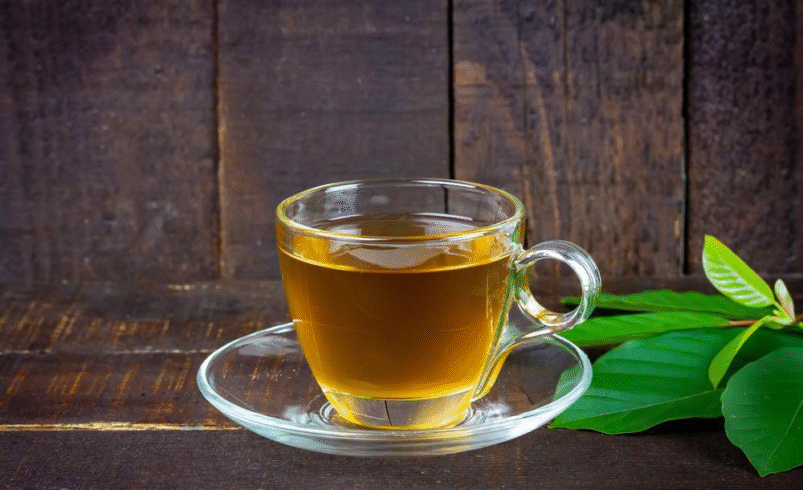What Is Kratom Tea? A Complete Guide to Brewing, Effects, and Benefits

Kratom (Mitragyna speciosa) has steadily moved from the rainforests of Southeast Asia to wellness communities across the United States and Europe. While it’s now available in capsules, powders, extracts, and even gummies, one of the oldest and most enjoyable methods of consumption remains the same: kratom tea.
For centuries, villagers in Thailand, Malaysia, and Indonesia brewed kratom leaves in hot water to gain stamina, relieve fatigue, and promote relaxation after long hours in the fields. Today, modern consumers continue that tradition, finding kratom tea to be smoother on the stomach, easier to customize, and more enjoyable than swallowing raw powder.
But what exactly is kratom tea, how is it prepared, and what effects can you expect from it? This guide will take you through everything you need to know, from traditional roots to modern brewing techniques, benefits, risks, and recommendations from leading vendors like Super Speciosa.
What Is Kratom?
Kratom is an evergreen tree native to Southeast Asia, particularly Thailand, Malaysia, and Indonesia. Its leaves contain over 40 alkaloids, but the two most significant are mitragynine and 7-hydroxymitragynine. These compounds interact with opioid receptors in the brain, creating effects that range from stimulating at low servings to sedating at higher ones.
Traditionally, farmers chewed fresh kratom leaves or brewed them into tea. This allowed them to stay alert and productive during long days in hot, humid conditions. In the West, kratom has evolved into a wellness product sold in many forms, but tea remains one of the most authentic ways to consume it.
What Is Kratom Tea?
Kratom tea is simply a beverage made by steeping kratom leaves, crushed leaf, or powder in hot water. Unlike swallowing raw powder, brewing tea extracts the alkaloids into liquid form, making them easier to digest.
There are two main approaches:
- Traditional: simmering crushed or dried leaves in hot water for 15–30 minutes.
- Modern: using kratom powder, tea bags, or even bottled kratom beverages for convenience.
Many users prefer tea because it is gentler on the stomach, tastes smoother when flavored with honey or lemon, and feels more like a mindful ritual than swallowing capsules. Vendors like Super Speciosa and Happy Hippo even share brewing guides with their customers to encourage traditional use.
How to Make Kratom Tea
Brewing kratom tea isn’t complicated, but the method affects both flavor and potency. The key is to avoid boiling the powder at high temperatures for too long, since excessive heat can degrade alkaloids.
A simple method is to simmer kratom powder or crushed leaf in water for about 15–20 minutes, strain it, and then flavor it with lemon, honey, ginger, or other additions. Lemon juice not only improves taste but also helps preserve alkaloids during brewing.
Some users prepare larger batches and store them in the fridge for up to five days, while others prefer making single servings fresh each time. For convenience, kratom brands like Kingdom Kratom offer pre-portioned products, and Cryo Kratom provides extracts that can be added directly to tea for extra potency.
Effects of Kratom Tea
The effects of kratom tea are similar to other forms of kratom but often described as smoother and longer-lasting. Because the alkaloids are absorbed gradually through liquid, the onset may be slightly slower than toss-and-wash, but many users find the overall experience more balanced.
- Low servings (1–3 grams): Stimulating, energizing, and focus-enhancing. Perfect for mornings or workdays.
- Moderate servings (3–5 grams): Relaxation combined with mental clarity and mood support.
- Higher servings (6+ grams): Sedative and analgesic, often chosen for pain relief or evening relaxation.
Duration usually ranges from 4 to 6 hours, depending on strain, dosage, and individual metabolism.
Kratom Tea vs. Other Forms
Compared to powder, tea tends to be easier on digestion and less likely to cause nausea. Capsules are discreet but slower to act. Extracts deliver stronger, quicker effects, but may feel overwhelming to beginners. Tea sits comfortably in the middle: traditional, customizable, and steady in its delivery.
This versatility is one reason kratom tea is often recommended for newcomers who want to explore the plant in a gentler, more approachable way.
Benefits of Kratom Tea
Many users report that it feels cleaner and more consistent than powder alone. The ability to adjust flavor with honey, mint, or citrus makes it far more palatable. Tea also allows people to stretch servings throughout the day, sipping slowly rather than consuming kratom all at once.
Another benefit is its connection to tradition. Drinking tea feels intentional and mindful, linking modern wellness routines with centuries of cultural practice in Southeast Asia.
Potential Drawbacks
The main drawback of kratom tea is its bitter taste. Even with sweeteners, the earthy flavor is an acquired taste. Brewing also takes more time than capsules or extracts. And because alkaloids can degrade if exposed to high heat for too long, improper preparation may reduce potency.
These challenges are easy to overcome with proper brewing techniques and by sourcing high-quality products from trusted kratom vendors. Brands like Super Speciosa and Happy Hippo are known for consistently potent leaf, making their products ideal for tea.
Strains Best for Tea
- White Veins: Energizing, often used in the morning. White Maeng Da tea, for example, is popular with students and professionals.
- Green Veins: Balanced, offering both mood lift and focus. Green Malay tea is a customer favorite at Super Speciosa.
- Red Veins: Calming and sedative, often brewed in the evening. Red Bali from Kingdom Kratom makes a soothing nighttime tea.
- Yellow/Gold: Smooth and mellow, versatile for any time of day. Cryo Kratom’s blends are often highlighted for their easygoing effects.
Kratom Tea in Today’s Wellness Market
Beyond home brewing, kratom tea has entered mainstream markets. Bottled kratom teas, instant tea bags, and pre-mixed drinks are available online and in some wellness stores. Kratom brands are innovating to make kratom tea as approachable as herbal teas like chamomile or green tea.
This accessibility shows kratom’s evolution from a traditional remedy to a modern wellness product with broad appeal.
Safety and Responsible Use
While kratom tea is natural, responsible use is crucial. Overconsumption can lead to nausea, dizziness, or tolerance. Beginners are advised to start small and work upward slowly. Staying hydrated and avoiding mixing kratom with alcohol or other substances also reduces risks.
Quality matters. Only buy from vendors who provide third-party lab results and follow GMP standards. Super Speciosa, Happy Hippo, Kingdom Kratom, and Cryo Kratom all maintain high testing standards, ensuring consumers get safe, uncontaminated products.
FAQs
Does kratom tea work as well as powder or capsules?
Yes, though its onset is smoother and may feel less intense than powder.
Can I make kratom tea in advance?
Yes, it can be refrigerated for several days, though fresh tea is most potent.
Does boiling destroy kratom’s alkaloids?
Boiling for long periods may reduce potency, but simmering with lemon juice preserves most alkaloids.
Which strains are best for beginners?
Greens like Green Malay or Green Maeng Da are balanced choices for newcomers.
Conclusion
Kratom tea remains one of the most enjoyable and traditional ways to experience kratom. Offering a smoother onset, customizable flavor, and connection to centuries of cultural use, it bridges the gap between tradition and modern wellness.
Whether you’re seeking energy, focus, mood enhancement, or relaxation, the right strain brewed into tea can deliver a balanced experience. Trusted vendors like Super Speciosa, Kingdom Kratom, and Cryo Kratom provide high-quality, lab-tested kratom that makes safe and effective tea possible.
For many, kratom tea is more than a drink, it’s a ritual of wellness, mindfulness, and connection to tradition.






